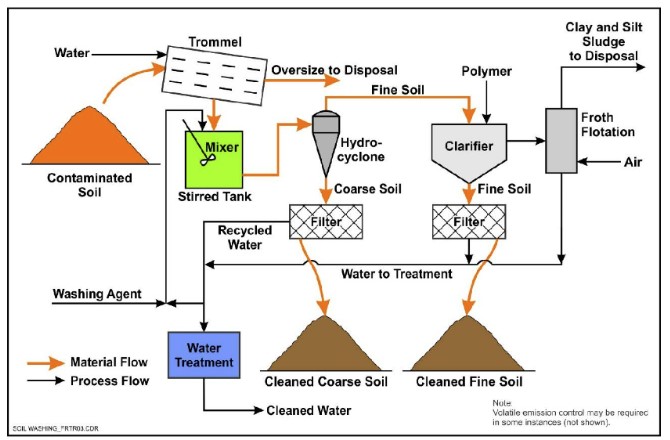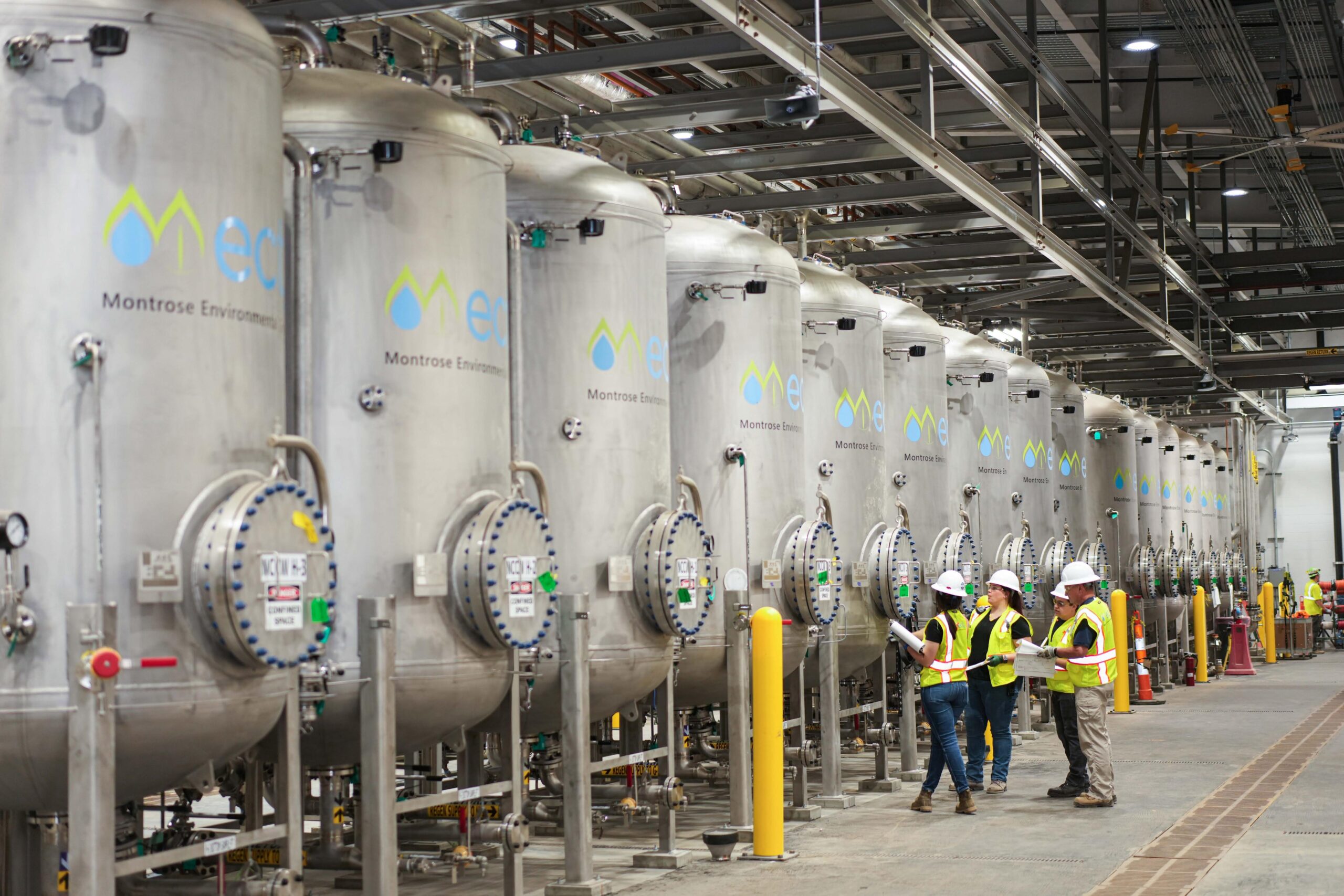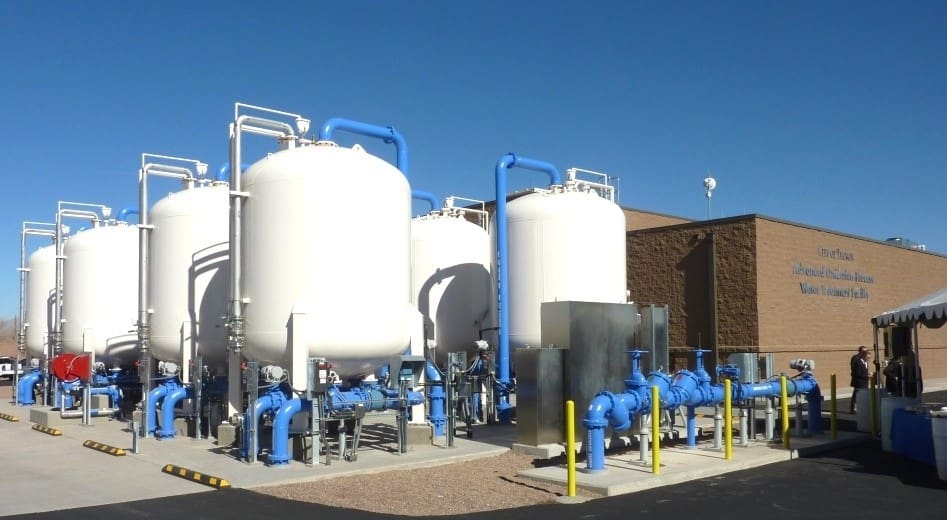Your Guide to PFAS Therapy Technologies and Perks
The occurrence of PFAS contamination in water sources requires a comprehensive understanding of available therapy innovations. Various techniques, such as triggered carbon purification, ion exchange systems, and advanced oxidation processes, existing distinctive advantages in attending to these persistent contaminants. Each technology not just targets details PFAS substances but also plays an important function in boosting overall water top quality and safeguarding ecological integrity. As neighborhoods come to grips with the implications of PFAS direct exposure, the option of a suitable therapy technique ends up being increasingly crucial, prompting a better exam of these innovations and their particular benefits.
Recognizing PFAS Contamination
Understanding PFAS contamination is crucial for addressing its pervasive effect on ecological and human wellness (m270 pfas treatment). Per- and polyfluoroalkyl materials (PFAS) are a team of synthetic chemicals commonly utilized in numerous industrial and consumer products due to their water- and grease-resistant residential or commercial properties. Generally found in firefighting foams, non-stick kitchenware, and water-repellent materials, PFAS have entered the atmosphere via manufacturing procedures, wastewater discharges, and leaching from garbage dumps
Once launched, these materials continue in the atmosphere, resulting in extensive contamination of soil and water resources. Their distinct chemical structure, identified by strong carbon-fluorine bonds, provides them resistant to degradation, causing a phenomenon called "for life chemicals." As a result, PFAS can gather in the body and the food cycle, possibly creating damaging wellness impacts, including immune system interruption, developmental issues, and a raised threat of specific cancers.
Regulative agencies and health and wellness organizations are increasingly identifying the relevance of PFAS contamination, prompting efforts to monitor, examine, and reduce its impacts. Understanding the paths of PFAS contamination is essential for informing public law and creating efficient techniques to secure both environmental and human health and wellness.
Overview of Therapy Technologies
Numerous treatment innovations have been developed to resolve the challenges posed by PFAS contamination in water and dirt. These modern technologies can be broadly classified right into several groups, each with its one-of-a-kind devices and performance in getting rid of PFAS compounds.
One famous strategy is ion exchange, which makes use of resin products to catch and get rid of PFAS from contaminated water. One more technology, advanced oxidation processes (AOPs), employs solid oxidants and ultraviolet light to damage down PFAS right into less damaging substances.

Triggered Carbon Purification
Turned on carbon purification is a widely made use of approach for the elimination of PFAS from infected water, recognized for its capability to adsorb a wide series of organic compounds. This technology utilizes activated carbon, a very permeable product with a substantial area, which assists in the binding of PFAS particles with physical adsorption. The effectiveness of triggered carbon in eliminating PFAS is affected by several elements, including the sort of carbon utilized, the get in touch with time, and the concentration of PFAS in the water.
One of the benefits of turned on carbon purification is its convenience; it can be implemented in different setups, such as granular turned on carbon (GAC) systems or powdered activated carbon (SPECIAL-INTEREST GROUP) systems. GAC systems are normally employed in larger-scale applications, while PAC can be utilized in smaller or momentary setups. The modern technology is fairly simple to run and keep, making it accessible for several water treatment centers.

Ion Exchange Equipment
Ion exchange systems stand for another efficient technique for the removal of PFAS from polluted water, matching methods like triggered carbon filtering. These systems operate the principle of exchanging ions in the water with ions hung on a resin product. Ion exchange materials can be specifically created to target the adversely charged PFAS compounds, efficiently capturing them and permitting cleaner water to travel through.
Among the main advantages of ion exchange systems is their More about the author capability to eliminate a wide variety of PFAS, including both long-chain and short-chain variations. This flexibility makes them ideal for various applications, ranging from community water therapy to commercial procedures. In addition, ion exchange systems can often accomplish reduced detection restrictions for PFAS contrasted to some other treatment approaches, therefore boosting water quality.
However, it is necessary to check and handle the regrowth of ion exchange media, as the efficiency can decline in time because of saturation. Proper upkeep and substitute of the material are critical for sustaining the system's performance. In general, ion exchange systems supply a reliable and reliable solution for PFAS removal, contributing considerably to safe alcohol consumption water criteria and ecological security.
Advanced Oxidation Processes
Advanced Oxidation Processes (AOPs) use powerful oxidants to properly weaken PFAS substances in contaminated water. These ingenious treatment techniques generate extremely responsive varieties, such as hydroxyl radicals, that can break down intricate PFAS molecules into less unsafe byproducts. m270 pfas treatment. AOPs typically utilize mixes of ultraviolet (UV) light, ozone, hydrogen peroxide, or Fenton's reagent, improving the oxidation potential see this and enhancing destruction efficiency
The main advantage of AOPs hinges on their capability to target a broad variety of PFAS substances, consisting of both long-chain and short-chain variations. This adaptability is necessary, as PFAS contamination commonly entails mixes of different substances with differing chemical structures. AOPs can be incorporated into existing water therapy systems, making them a useful service for several districts and industries.
Nevertheless, the execution of AOPs can be resource-intensive, requiring careful factor to consider of functional prices and power intake. Additionally, while AOPs are effective in damaging down PFAS, they might not website here entirely remove all byproducts, requiring additional therapy actions - m270 pfas treatment. Generally, AOPs stand for an encouraging avenue for dealing with PFAS contamination, adding to cleaner water resources and enhanced public health protection

Final Thought
By picking the appropriate innovation, communities can boost water high quality, safeguard public health, and reduce the environmental threats associated with PFAS direct exposure. Proceeded research study and execution of these techniques are important for effective administration of PFAS contamination in influenced areas.